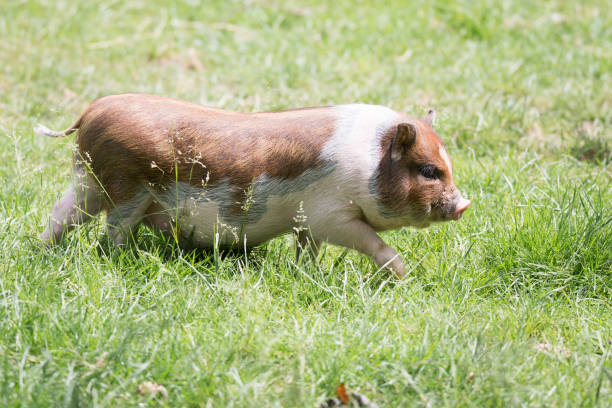"Delving into the World of Miniature Pigs: A Comprehensive Guide"
Miniature pigs, also known as teacup pigs, have become increasingly popular as pets in recent years. These adorable creatures have captured the hearts of many with their intelligence, cleanliness, and charm. This article explores the origin of miniature pigs, current trends, and their impact on the pet industry.

History of Miniature Pigs
Miniature pigs, despite their popularity today, have a relatively recent history. They were first bred in the 1940s for use in medical research due to their physiological similarities with humans. It wasn’t until the 1980s that miniature pigs started to gain recognition as pets, primarily in the United States.
Current Popularity of Miniature Pigs
Today, the popularity of miniature pigs as household pets continues to grow. Social media platforms have played a significant role in this trend, with celebrities like Paris Hilton and Miley Cyrus sharing pictures of their own miniature pigs. This surge in interest has led to an increase in miniature pig breeders and pet products specifically designed for these animals.
Impact on the Pet Industry
The rising popularity of miniature pigs has had a considerable impact on the pet industry. The estimated price range to purchase a miniature pig varies greatly, from $1,000 to $5,000, depending on the breeder. Furthermore, the costs of care, including feeding, housing, and veterinary bills, can also add up, contributing to the pet industry’s economic growth.
Miniature Pigs: Not Just a Pet
Despite their popularity, owning a miniature pig is not a decision to be taken lightly. These animals require a significant amount of care and attention. They are intelligent creatures that require mental stimulation, and they can live up to 20 years. Prospective owners must be prepared for a long-term commitment.
The Future of Miniature Pigs
As the trend of owning miniature pigs continues to grow, it is essential to consider the implications. Animal welfare organizations have expressed concerns about poor breeding practices and impulse purchases. As a result, many are advocating for more stringent regulations and public education on the responsibilities of owning a miniature pig.
In conclusion, while miniature pigs have become popular pets, prospective owners should be fully aware of the responsibilities that come with owning these intelligent and long-lived animals. As more people become interested in owning these pets, it is crucial to promote responsible ownership and ensure the welfare of these unique animals.




